California Cotton Fields: Scaling Carbon Farming Practices with Bowles Farming Company
By Esha Chhabra
Cotton is part of the broader California agricultural system wherein shifting practices opens pathways for whole systems regeneration. For the past year, and throughout a planting cycle, Fibershed has been visiting cotton growers throughout Northern and Central California in an effort to understand the system as it is. This is an examination formed through proximity and a commitment sealed through mutuality: we share the responsibility from soil to skin to deconstruct the narratives around this favored fiber and dig deep into what it could look like to restore the soil undergirding this system. This series on cotton explores the stories of several innovators and creative minds, examining cotton as it is in our home community to understand our collective opportunity to shift practices from soil to soil.
Photographed by Paige Green
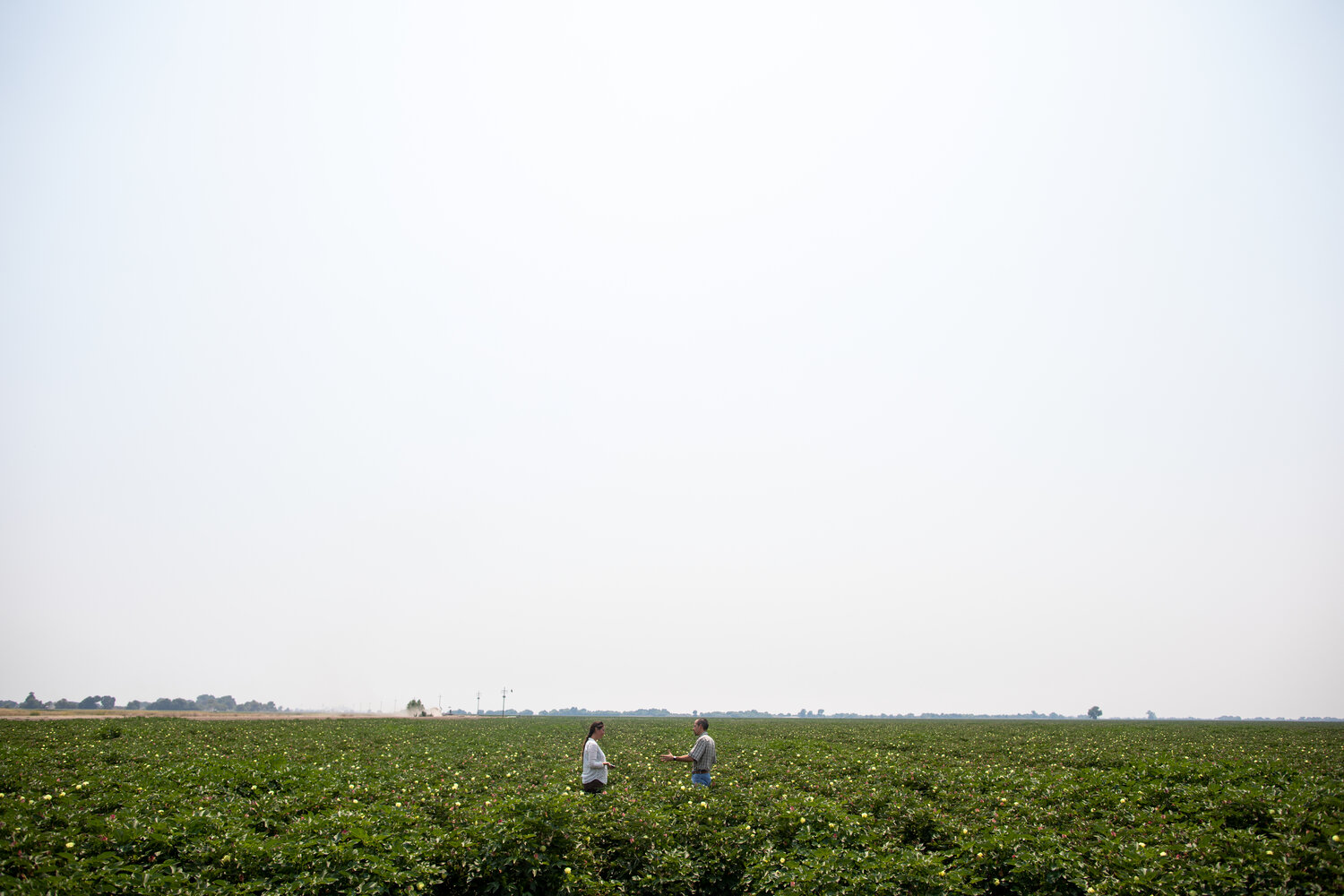
Bowles Farming Company in Los Banos, California is located on the northern side of the San Joaquin Valley in Merced County next to the second largest contiguous wetland in the United States (after the Everglades). It also happens to grow one of the world’s most consumed natural fibers, accounting for roughly one-third of all the fiber that makes up our wardrobes.
Here the fields go farther than the eye can see. Bowles Farming Company grows over 2,000 acres of cotton with an attention to soil health. “There’s a lot of buzzwords out there right now from sustainability to regenerative. We think a lot about our soil, investing in a more holistic model [of] farming,” says Cannon Michael, CEO of Bowles Farming Company and sixth-generation farmer.
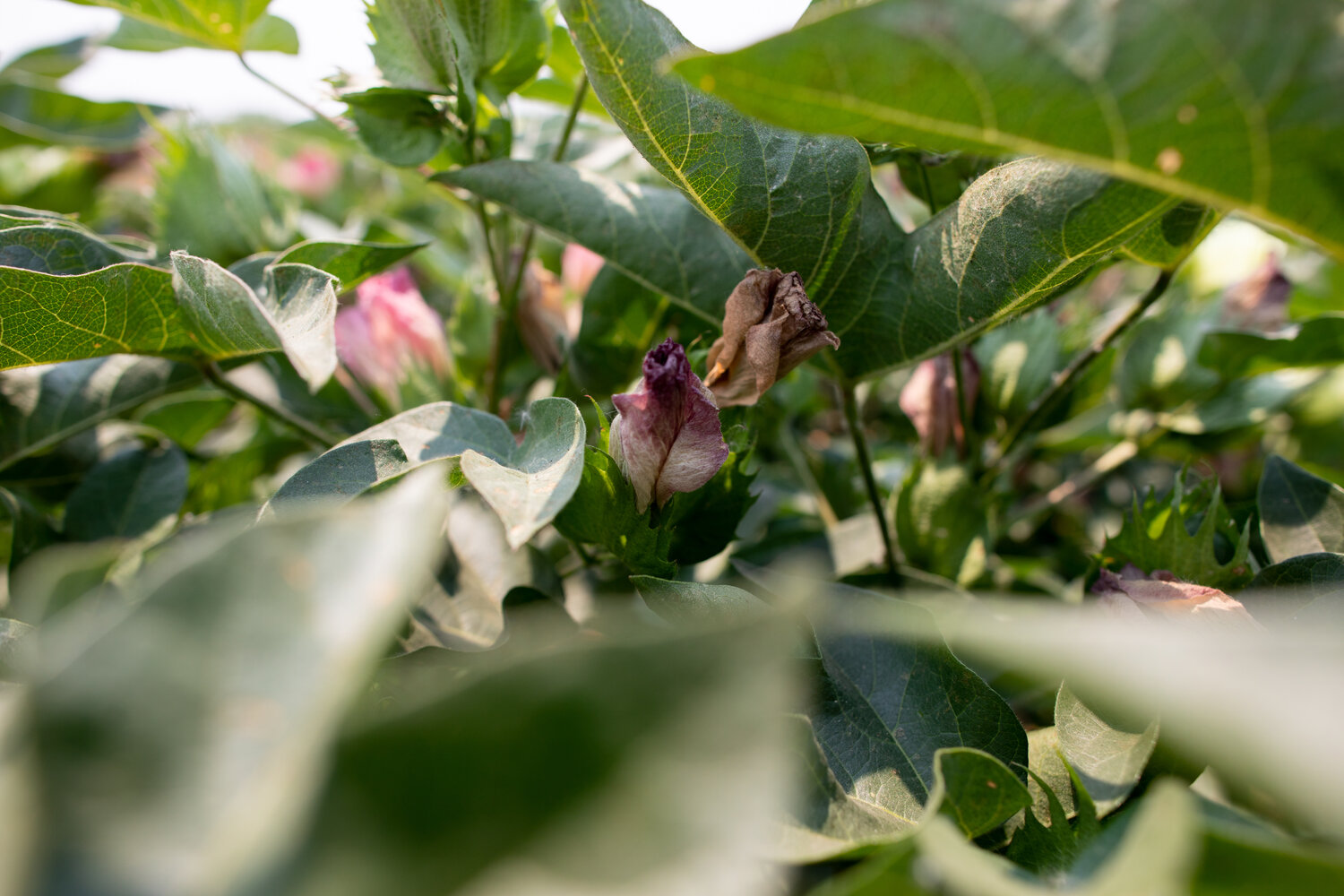
They grow a mix of Pima and Hazera varieties, specifically. Currently, Bowles grows cotton primarily with conventional methods, and this is primarily due to the lack of market demand for certified Organic cotton. It is typical for larger-scale farms to receive guidance and technical assistance from pest control advisors (PCAs) who make recommendations for the controlled use of pesticides when a crop is struggling from an infestation. At Bowles’ farm, pesticides are not used prophylactically on the cotton crop, but instead, as a measure of last resort. All pesticide usage must be pre-approved by the county and final usage (quantity and type of chemical used) must be reported to the state. When compared to cotton-growing regions in other parts of the country and the globe, California requires and provides a high level of public transparency for pesticide usage.
“We’re very conscious about any synthetic inputs that we put in; instead, we’re using organic matter wherever possible. This can be chicken manure to compost,” explains Michael. “In fact, cotton is such a crop that you don’t want to overfeed it with fertilizer. There’s no benefit.”

Michael spends his days overseeing the farm, serving on industry boards and going to water district meetings (lots of them, he repeats). He is often thinking about the plants, the heat, the water. With so many external factors outside of his control — from tariffs with China, or the development of high-speed rail through the fields of his farm, to drought, and gophers eating drip tape, he admits he tends to worry.
“For us, sustainability is a part of everything we do. As a farming family with over 150 years of history, sustainability is not just a catchphrase for us, it’s a way of life,” he says.
Michael began working on the farm at the age of 13, primarily during the summer months. After college, he moved to Atlanta and got into the real estate business. In 1998, he returned to his roots in California and became the shop foreman under his uncle, Philip Bowles, before moving up the ranks and becoming president in 2013.
Michael is well-versed in the agronomic and economic realities of cotton systems; he speaks extensively about the biology of the cotton plant but also the dynamics of international trade agreements, and the opportunities with robotics and implanted DNA markers for his operation. He is open to learning new things and trying to make his operation better; he wants to make Bowles “the kind of farming that people want to buy things from.”
Today, they grow a mix of 14 crops — from tomatoes and melons, alfalfa and almonds, to cotton and carrots. Crop rotations improve soil quality, and Bowles rotates their cotton crop every few years, mostly with tomatoes and sometimes with melons.

Cotton, like the vast majority of crops, requires irrigation, which is measured and reported as the amount of water it takes to cover one acre of land to one foot of depth — an acre-foot. On average, California cotton uses 2.9 acre-feet of water per acre per year, which is lower than the 3.8 acre-feet used to grow an acre of alfalfa, or the 4.5 acre-feet required annually on average for rice, and on par with vegetables and orchard crops we enjoy at every meal.
Within the San Joaquin Valley Watershed, water allocation is complicated. At Bowles Farming Company, an average of 10 to 12 inches of rain falls every year and they are lucky to have access to relatively consistent water for their irrigation needs due to their longstanding farming history within their district. In the drought years around 2014, they fallowed land and sold water to other farmers in need. To save water and manage costs, Bowles uses a mix of flood and drip irrigation. Drip allows more precise use of water, while flood requires less energy and maintenance cost.
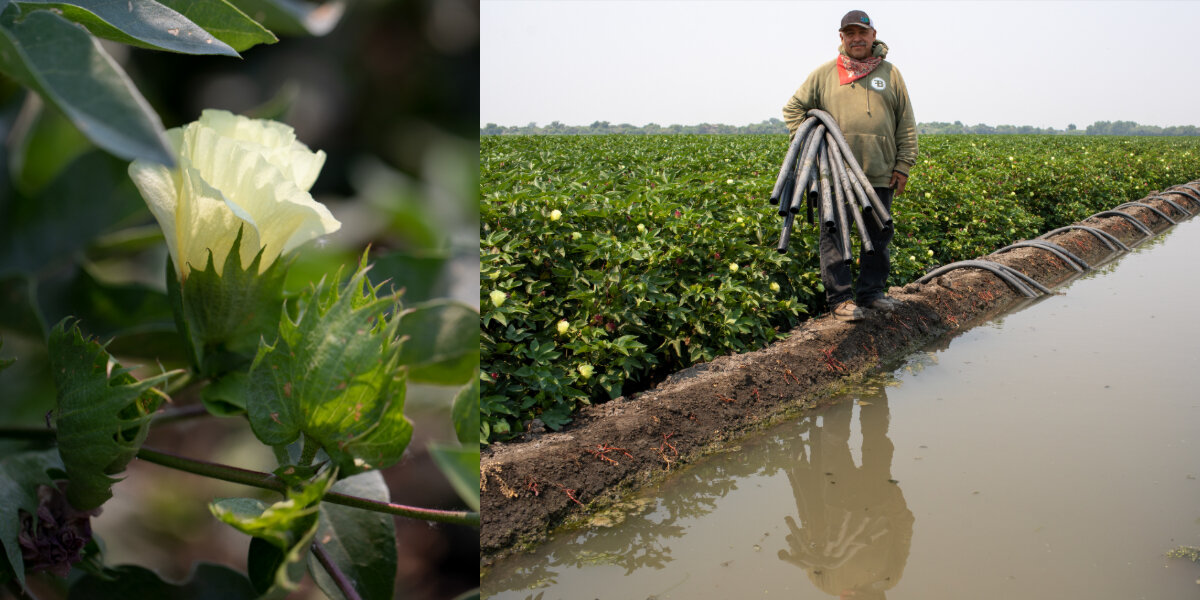
For Michael, farming has to be done in a manner that’s respectful of the people and the ecosystem, as much as it is of the soil and the crop. Thus, Bowles Farming Company goes beyond the basics for their staff of 50 to 60 full-time employees. They offer workers compensation, health care, a scholarship fund, and housing for their workers — exceptional worker benefits within the global cotton production industry.
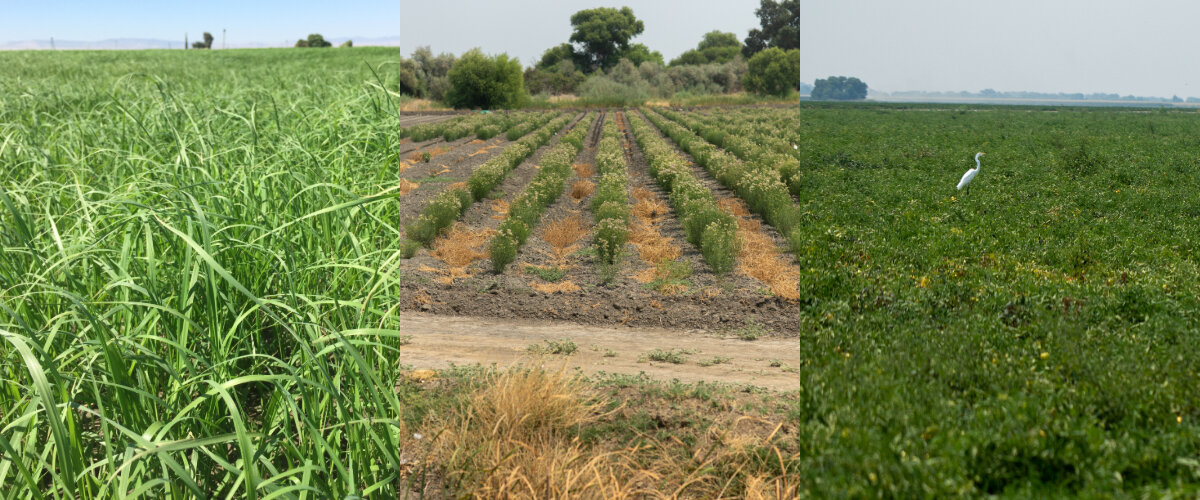
In addition to providing a high level of social benefits, Bowles also focuses on cultivating biodiversity. The farm works with a local beekeeper to support the native bee population. And Michael works with a slew of conservancy and NGO groups, ranging from the Environmental Defense Fund, to the Audubon Society, to the US Fish and Wildlife Service to support habitat restoration. Most recently, Bowles Farming Company partnered with The Nature Conservancy, Point Blue Conservation Science and the Center for Land-Based Learning to bring high schoolers out on the farm to work on cultivating biodiversity on the farm and in the nearby Central Valley Wetlands.
Bowles is currently working with Fibershed staff, colleagues at the Carbon Cycle Institute, East Stanislaus and Merced County Resource Conservation Districts to develop a Carbon Farm Plan that will create a roadmap for implementing practices that build soil carbon and that enhance crop productivity naturally, along with increasing water holding capacity. Beyond these on-farm benefits, such practices offer a broader societal benefit by drawing down additional carbon dioxide molecules from our atmosphere and store them in the soil. Bowles is also collaborating on a California-wide cotton research project with Fibershed and Chico State University’s Center for Regenerative Agriculture and Resilient Systems focused on the use of multi-species cover crops.
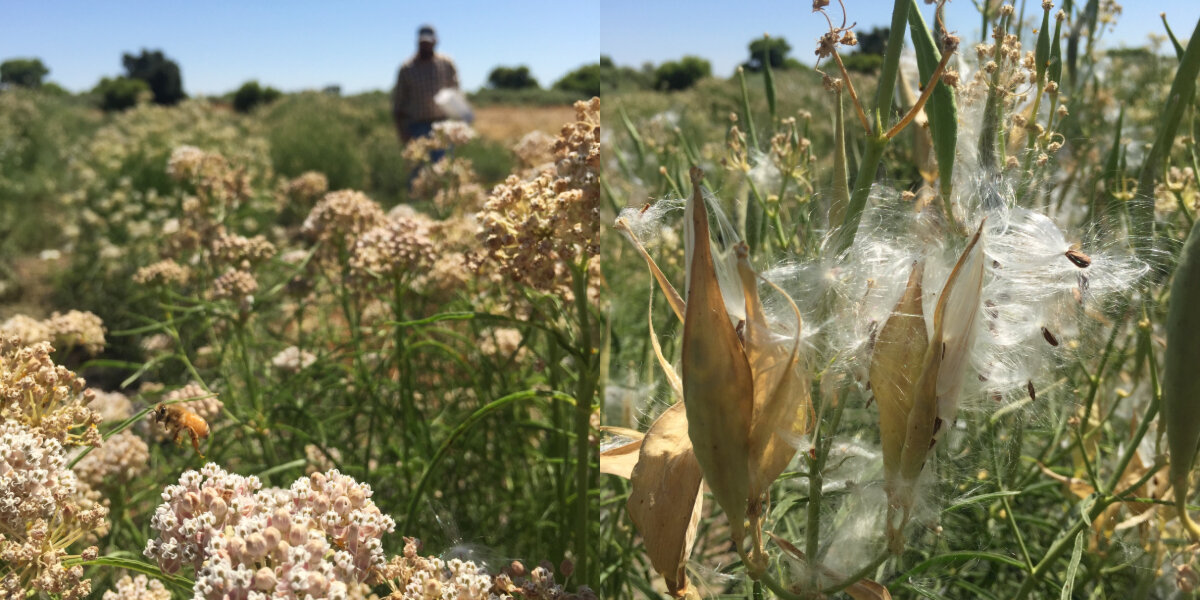
Bowles is working diligently to move toward a regenerative and resilient-to-climate-change farming system while retaining a business model that keeps the community well employed. The farm is committed to leading the way to a system for large scale San Joaquin Valley based agriculture that regenerates soil and ecosystem health. They have recently partnered with southern California based compost company Agromin to produce certified Organic compost on-site, and were awarded a California Department of Food and Agriculture Healthy Soils Demonstration Project grant focused on cropland compost applications. They have a long relationship with the University of California Agricultural Extension Services and are currently experimenting with reducing the frequency of tillage, resulting in less soil disturbance. Additionally, they have installed a megawatt solar system on the farm.
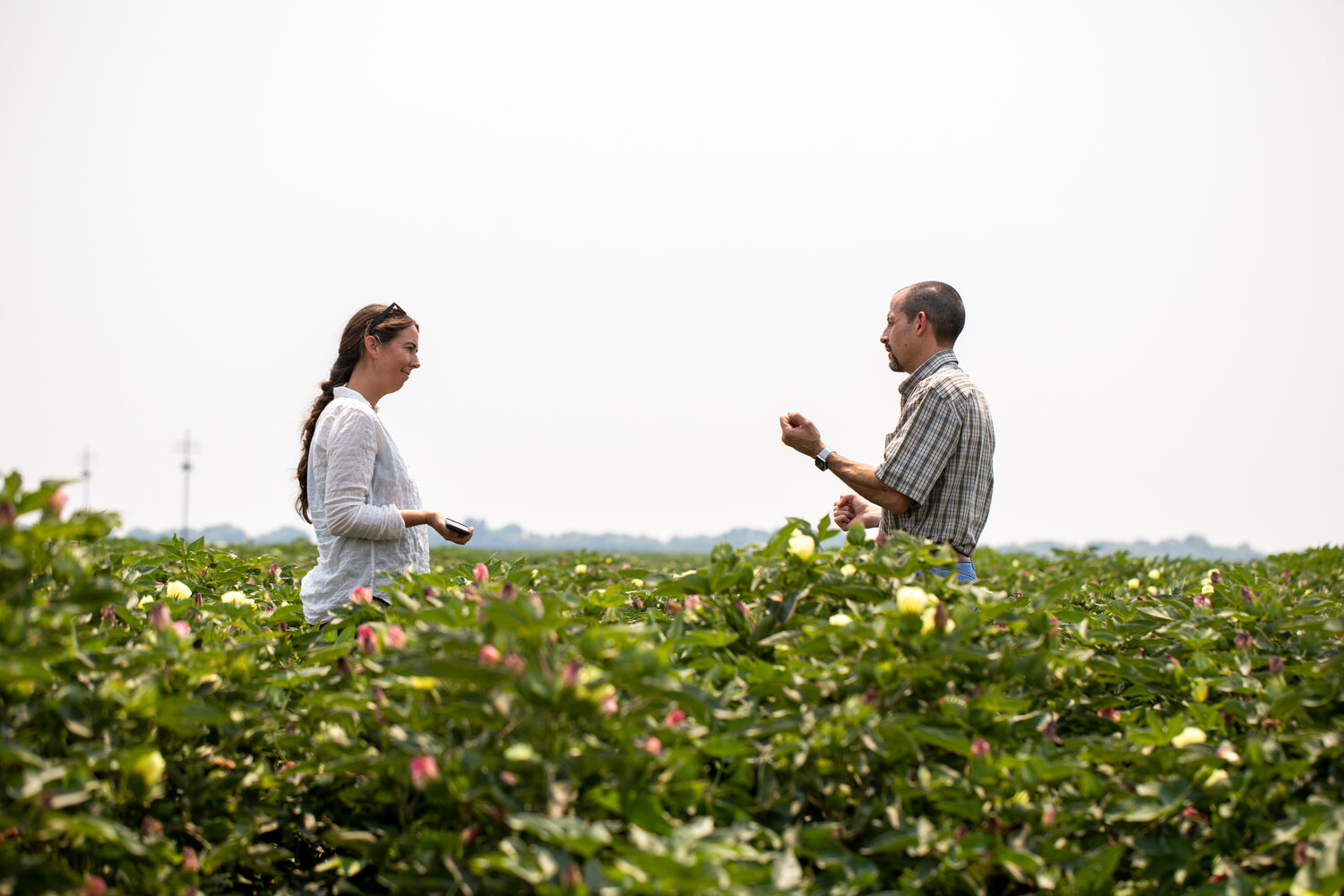
Farmers are interested in how they can be a part of this carbon economy, Michael says. “But it’s a risky thing to experiment with given all the other pressures they have to deal with. So we need to flesh out in greater detail how carbon sequestration would work, and what would be the incentives to do so. We’re getting closer.”
Michael also wants to connect brands to farmers. Bowles cotton is in sheets sold at Bed Bath & Beyond and Costco, but Michael wants consumers to have a closer relationship to people like himself: “Today with technology, there are more opportunities to connect consumers to farmers. We need to get brands to have the courage to lead the way.”
That’s the next step for him, he says: getting more brands to support California cotton and support farmers and workers who are growing cotton with a holistic lens.